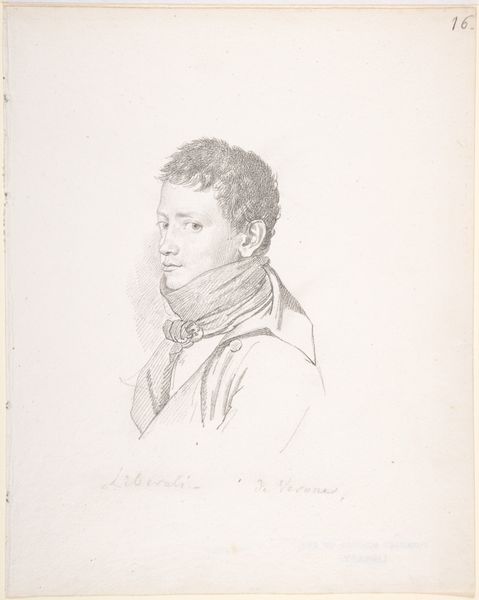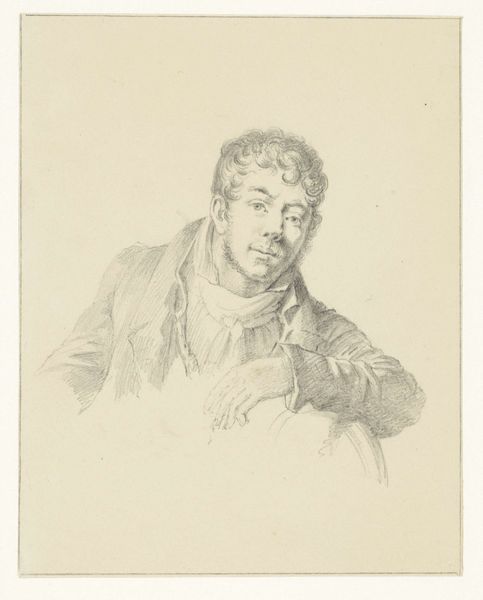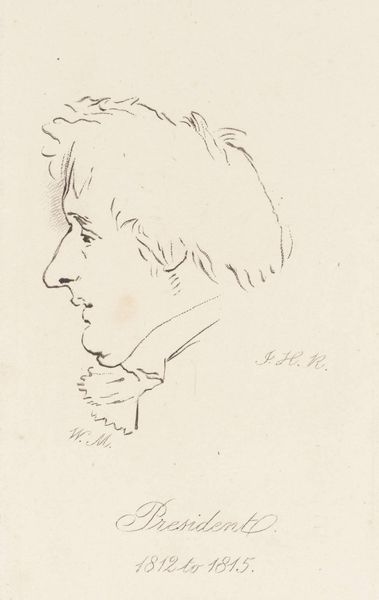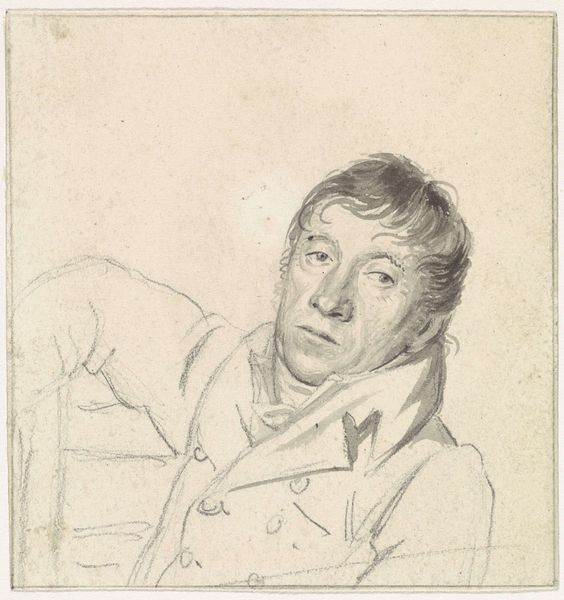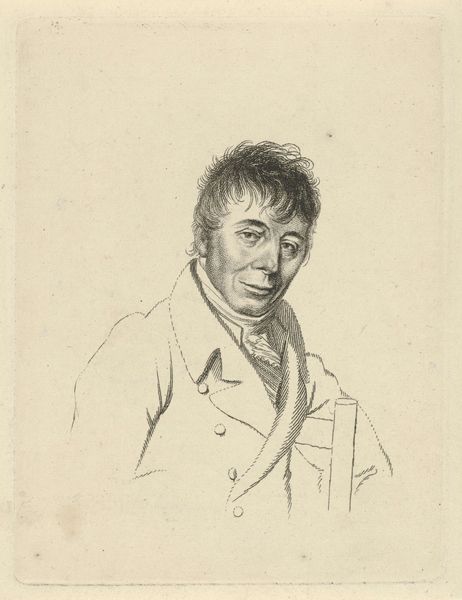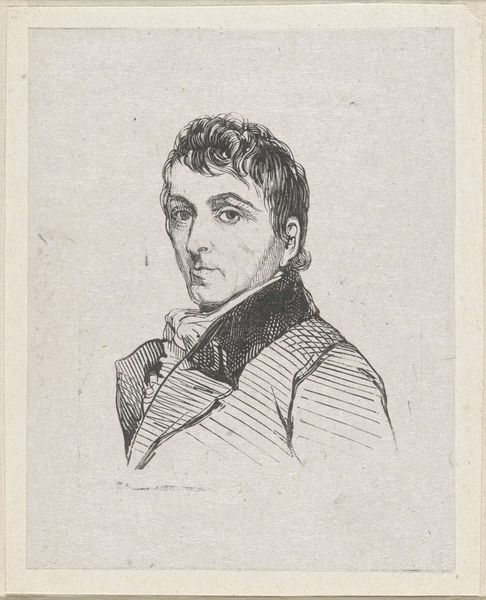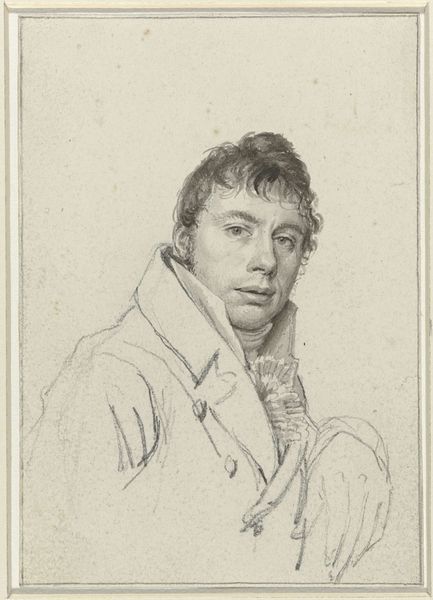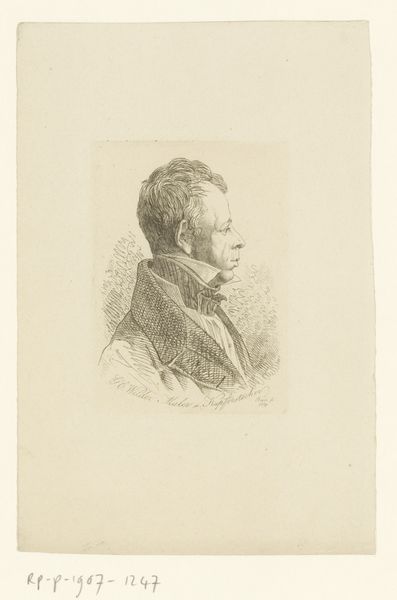
drawing, pencil, graphite
#
portrait
#
pencil drawn
#
drawing
#
pencil sketch
#
portrait reference
#
pencil drawing
#
romanticism
#
pencil
#
graphite
#
portrait drawing
#
realism
Dimensions: height 140 mm, width 101 mm
Copyright: Rijks Museum: Open Domain
Curator: What an unassuming work, isn't it? This is Jacob Ernst Marcus’s 1812 portrait of Anthony Oberman. Editor: I agree. It’s understated, almost ephemeral, rendered delicately in pencil on paper. The light is exquisite, especially around the face, creating a gentle three-dimensionality despite the lack of strong contrasts. Curator: Marcus's position in Amsterdam society afforded him connections, certainly. One imagines Oberman occupied a similar sphere, part of the Dutch elite during a period of significant political upheaval. France had annexed the Netherlands only a couple of years prior. Editor: The soft gradations in tone really captivate, don't they? The artist really captured the details in Oberman's features through shadow and line weights, it leads my eye down along the neckline toward that meticulously rendered lapel. But more than capturing a likeness, I sense he conveys a specific attitude. Curator: Indeed. And while the formal qualities are remarkable, one can also consider the broader context of portraiture in the Netherlands at this time. The drawing is imbued with a desire to reaffirm status amid revolution and shifting social structures. Consider what it meant to commission, or to gift, this rendering within a social network facing dramatic political transformations. Editor: Interesting. Looking closely, it seems unfinished; those lightly sketched lines near the shoulders lack definition. It’s fascinating how this lack of completion lends a sense of immediacy, of the subject being caught in a fleeting moment. There’s an inherent dynamism despite its stillness. Curator: Exactly! What appears unfinished might reflect broader social dynamics. The sitter looks very clean cut. Almost conforming to what was an image of upper-middle class identity being built through self representation, particularly around the shifting nature of labor and class during the period after the French annexation of 1810. Editor: To me, the drawing embodies a sort of delicate impermanence that makes its subtlety all the more potent. Curator: A perceptive observation, focusing us beyond aesthetics to societal structures. Editor: It all ties together beautifully in the end, wouldn’t you agree?
Comments
No comments
Be the first to comment and join the conversation on the ultimate creative platform.
